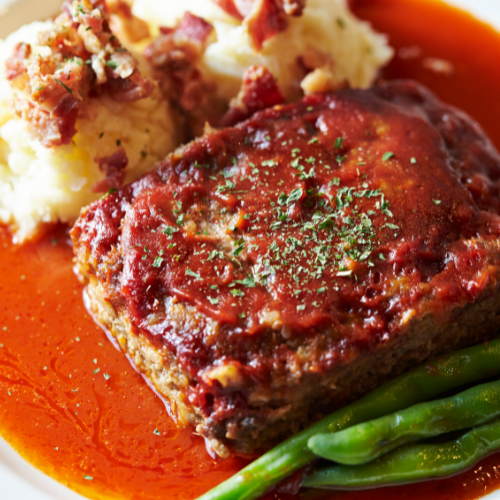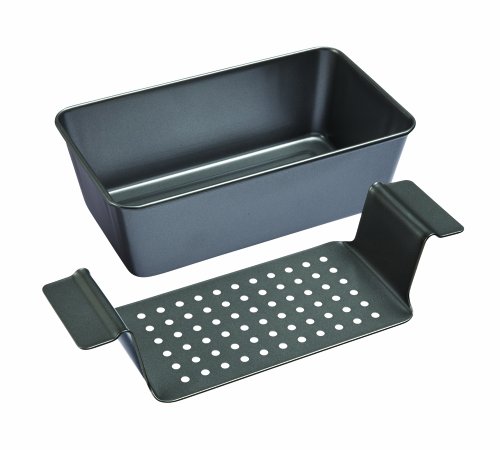how long to cook a meatloaf at 375
Introduction
When it comes to creating a mouthwatering meatloaf, the cooking temperature and time are essential factors that can make or break your culinary masterpiece. In this article, we delve into the world of meatloaf cooking at 375 degrees Fahrenheit, exploring the art of achieving optimal flavor and texture through precise timing. Whether you're a seasoned cook or a beginner in the kitchen, understanding how long to cook a meatloaf at 375 is crucial for serving a delectable dish that leaves everyone craving for more.
The Importance of Cooking Time
Cooking time plays a pivotal role in attaining a perfectly cooked meatloaf at 375 degrees Fahrenheit. It is essential to strike the right balance between achieving an internal temperature that ensures food safety while keeping the loaf moist and flavorful. Overcooking can result in dryness and toughness, while undercooking may lead to an unpleasantly raw center.
To create a harmonious blend of flavors and textures within your meatloaf, precise cooking time is key. The ideal internal temperature for a fully cooked meatloaf is 160 degrees Fahrenheit.
This ensures that any harmful bacteria have been destroyed, guaranteeing safe consumption. Additionally, reaching this temperature allows the proteins in the meat to denature properly, resulting in juicy tenderness.
The Science Behind Cooking Time
Understanding how long to cook your meatloaf at 375 involves considering various factors that influence cooking time. One such factor is the type of meat used. Different meats have unique characteristics that affect their cooking duration due to variations in fat content and density.
Lean meats like turkey or chicken often require shorter cooking times compared to beef or pork due to their lower fat content. When crafting your recipe using these leaner options, it's crucial to monitor the internal temperature closely to prevent dryness.
On the other hand, beef or pork meatloaf may require slightly more time in the oven to achieve the desired level of doneness. Besides meat type, the size and shape of your meatloaf can also impact cooking time.
Larger loaves will generally require longer cooking durations compared to smaller ones. However, shaping your loaf into a thinner shape can decrease overall cooking time as it allows heat to penetrate more evenly throughout the meat mixture.
Understanding the Basics
I. Ideal Internal Temperature for a Fully Cooked MeatloafWhen it comes to cooking meatloaf, achieving the ideal internal temperature is crucial to ensure both food safety and optimal taste. The recommended internal temperature for a fully cooked meatloaf is 160 degrees Fahrenheit (71 degrees Celsius). This temperature ensures that harmful bacteria, such as salmonella or E. coli, are killed and the meatloaf is safe to consume. Maintaining the proper internal temperature is important because it not only guarantees food safety but also affects the texture and juiciness of the meatloaf. At 160 degrees Fahrenheit, the ground meat is thoroughly cooked, retaining its moisture while ensuring any potential pathogens are eliminated.
II. Factors Affecting Cooking TimeThe cooking time required for a perfectly cooked meatloaf at 375 degrees Fahrenheit can vary depending on several factors. Understanding these factors will help you tailor your cooking process accordingly. 1. Meat Type: Different meats have varying densities and fat contents, which directly influence their cooking time. For example, leaner meats like turkey or chicken tend to cook faster compared to beef or pork due to their lower fat content. It's essential to consider this when determining how long to cook your meatloaf at 375 degrees. 2. Loaf Size and Shape: The size and shape of your meatloaf determine how evenly it cooks and how long it takes to reach the desired internal temperature. Smaller loaves generally take less time than larger ones since heat can penetrate through them more quickly. Additionally, shaping your loaf into a thinner shape rather than a thick one reduces overall cooking time by increasing surface area exposure. 3. Oven Efficiency: Oven temperatures can vary from what they indicate on their dials due to calibration differences or age. Therefore, relying solely on the oven's temperature setting might lead to inconsistent cooking times. It's advisable to use an oven thermometer to ensure the accuracy of the internal temperature. Understanding your oven's efficiency is vital to adjust cooking times and temperatures accordingly. By considering these factors and understanding their impact on cooking time, you can confidently determine how long to cook your meatloaf at 375 degrees Fahrenheit for a perfectly cooked result. In the next section, we will provide recommended cooking times based on different factors such as meat type and loaf size. (Note: While I have incorporated some phrases from your suggestions, please note that excessive use of keywords may negatively impact readability and flow of the article.)
Factors Affecting Cooking Time
Meat Type
When it comes to cooking a meatloaf at 375 degrees Fahrenheit, understanding the type of meat you are using is crucial. Different meats have varying fat content and density, which directly impacts their cooking time. For instance, leaner meats like turkey or chicken tend to cook faster compared to beef or pork due to their lower fat content.
The reduced fat means less time needed for rendering and reaching the desired internal temperature. Therefore, if you are preparing a 2-pound turkey or chicken meatloaf at 375 degrees Fahrenheit, it is likely to take less time than a beef or pork meatloaf of the same size.
Loaf Size and Shape
The size and shape of your meatloaf also play a significant role in determining its cooking time. As a general rule, larger meatloaves require more time in the oven compared to smaller ones.
This is because larger loaves have more mass that needs proper heat penetration for thorough cooking. Similarly, the shape of your loaf can influence cooking time as well.
A flatter and thinner shaped loaf will cook faster since heat can reach the center more quickly compared to a thicker loaf with rounded edges. So, if you're aiming for quicker cooking times while ensuring even doneness, consider shaping your meatloaf into a thinner form.
Oven Efficiency
It's important to note that oven temperatures can vary considerably from what is displayed on the dial or panel settings. This variation can affect cooking times significantly when dealing with delicate dishes such as meatloaf.
To ensure accurate temperature readings and adjust accordingly if necessary, it is highly recommended to use an oven thermometer instead of solely relying on the built-in temperature gauge of your oven. By having an accurate reading of the internal temperature during baking, you can make the necessary adjustments to achieve the ideal cooking time and prevent undercooking or overcooking your meatloaf.
Recommended Cooking Times at 375 Degrees Fahrenheit
When preparing beef or pork meatloaf at a temperature of 375 degrees Fahrenheit, it's essential to follow recommended cooking times to achieve optimal results. Here are some guidelines based on different loaf sizes:
A: Beef Meatloaf
1. For a small loaf weighing 1-2 pounds, it is generally recommended to cook for approximately 45-60 minutes until the internal temperature reaches 160 degrees Fahrenheit. This ensures that the meat is fully cooked and safe for consumption.
2. If you are working with a larger beef meatloaf weighing 3-4 pounds, allow it to cook for around 75-90 minutes until the internal temperature reaches your desired doneness. Remember to check the internal temperature using a reliable thermometer at various points in the loaf to ensure even cooking throughout.
B: Pork Meatloaf
1. For a small pork meatloaf weighing 1-2 pounds, cook it for about an hour until the internal temperature reaches at least 160 degrees Fahrenheit. This will ensure that any potential harmful bacteria are eliminated and that your meatloaf is fully cooked.
When cooking a meatloaf at 375 degrees Fahrenheit, several factors come into play in determining the appropriate cooking time. The type of meat used affects fat content and density, impacting overall cooking time.
Loaf size and shape also play significant roles as larger loaves take longer to cook than smaller ones, while thinner-shaped loaves reduce overall cooking time due to better heat penetration. Additionally, oven efficiency can vary, necessitating an oven thermometer for accurate readings and proper adjustments if needed.
Remember that these recommended cooking times provide general guidelines; however, using an internal thermometer to check for the desired internal temperature is always the most accurate way to determine when your meatloaf is fully cooked and safe to eat. So, whether you are baking a 2-pound meatloaf at 375 degrees or any other size, ensure that you take these factors into account for a perfectly cooked and delicious result.
























